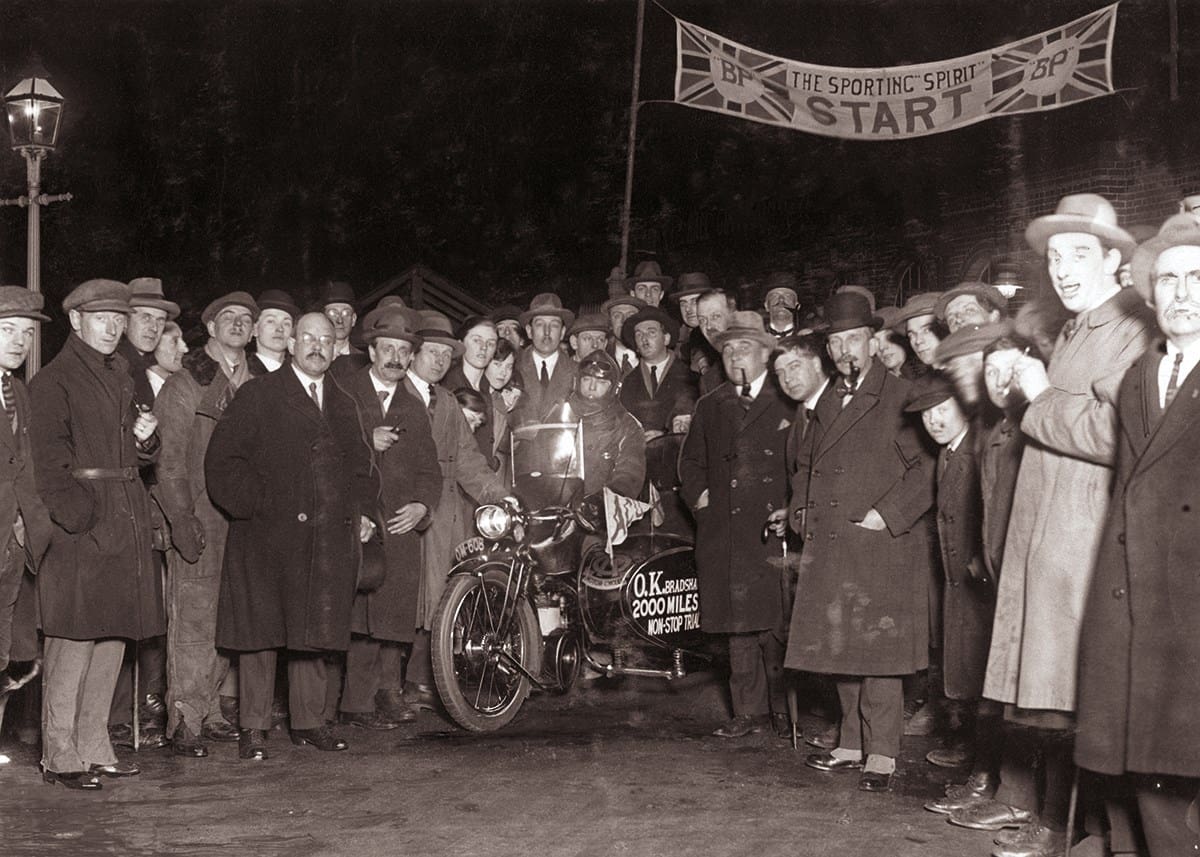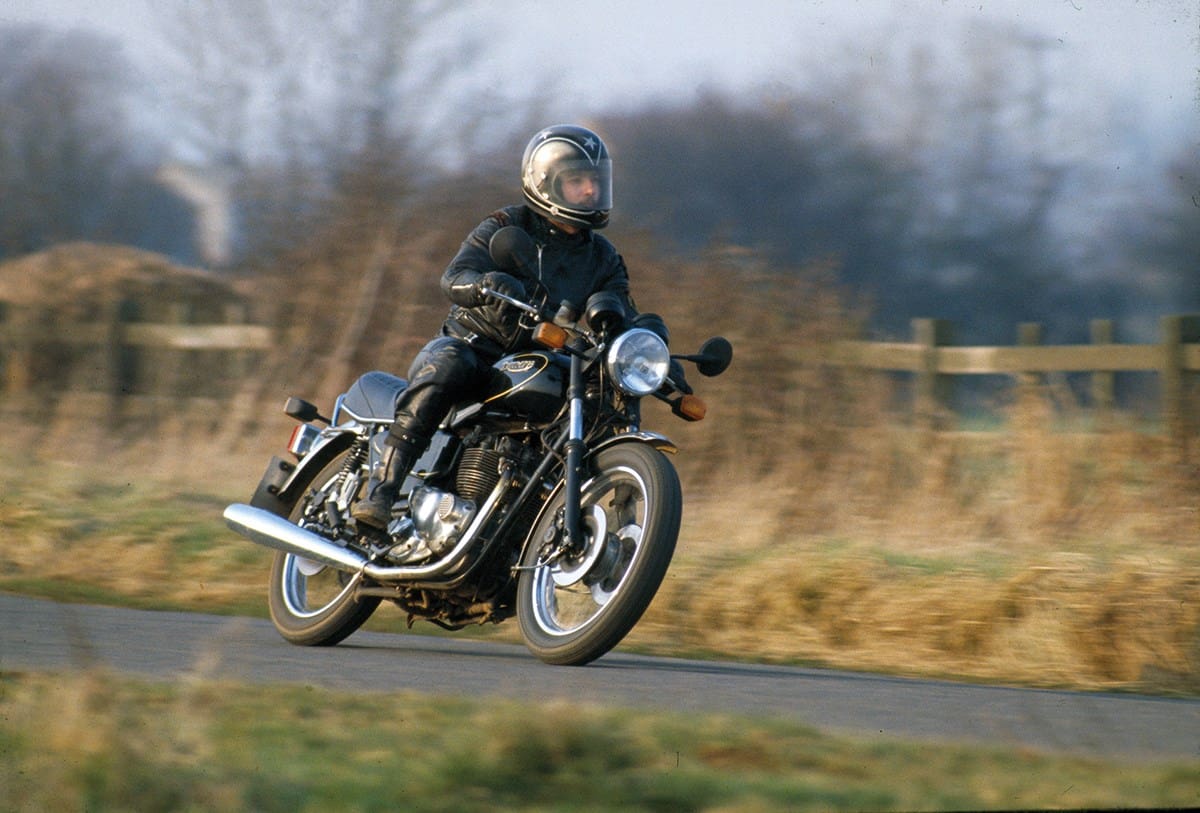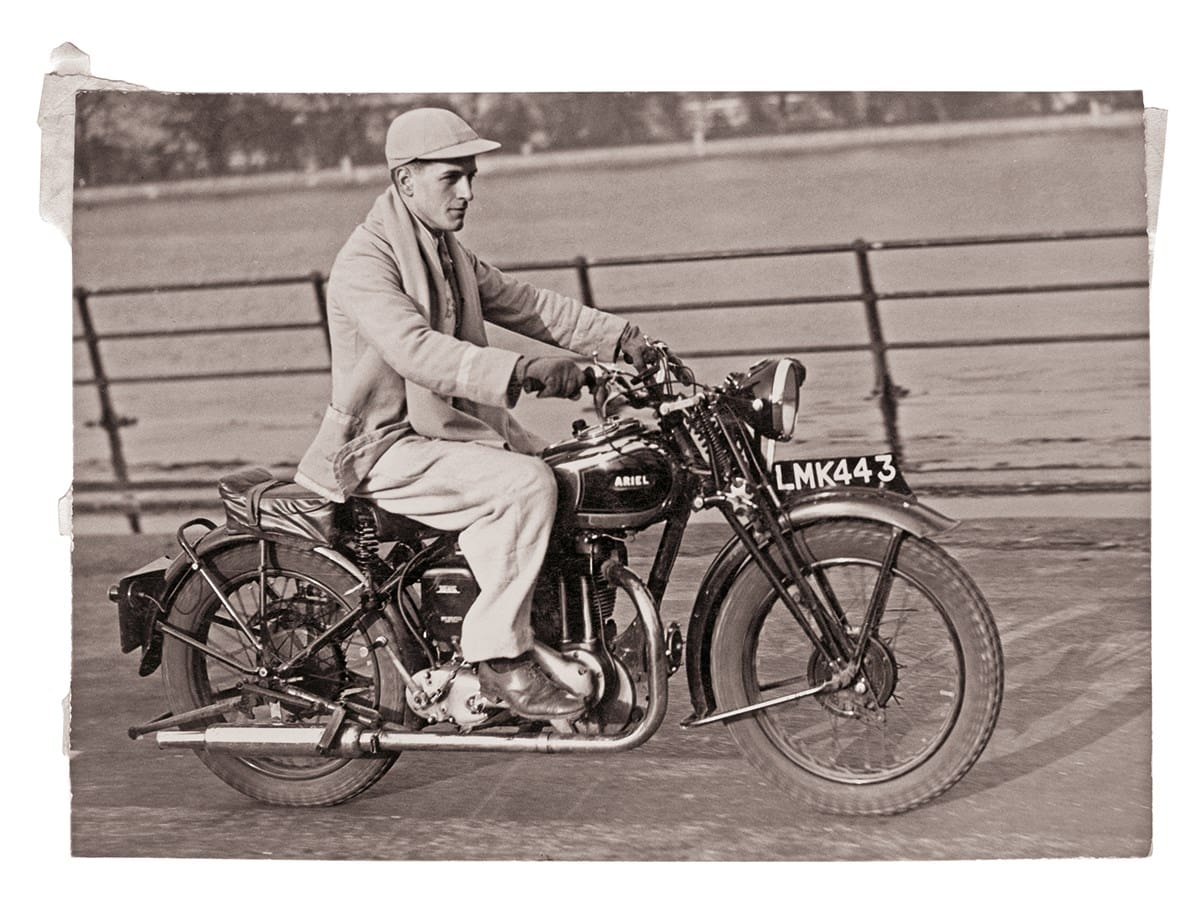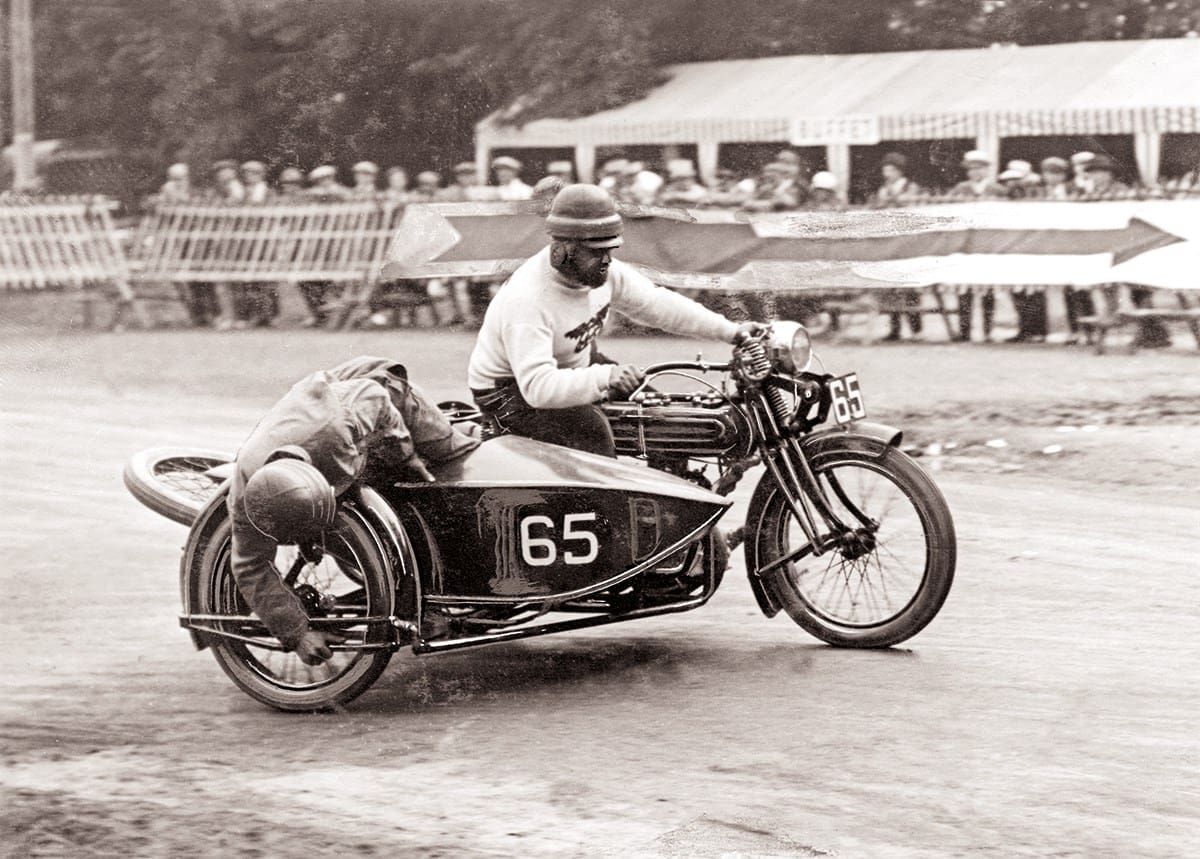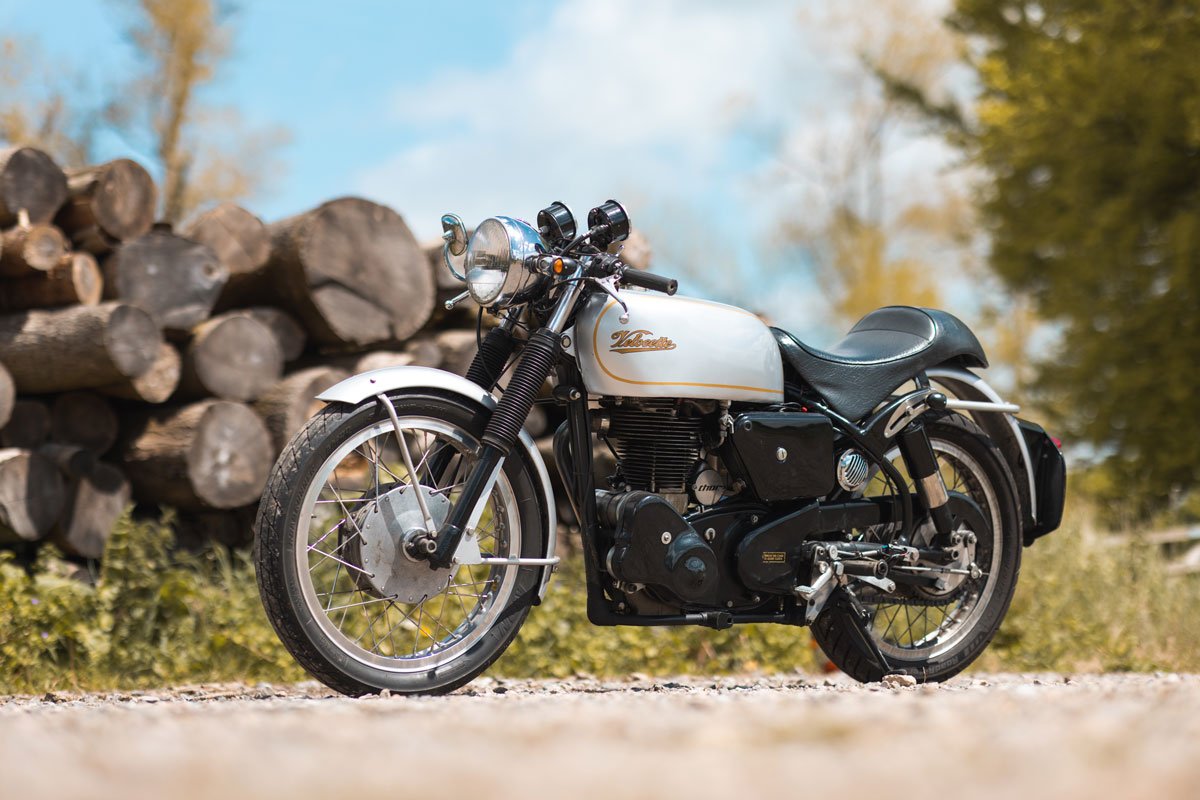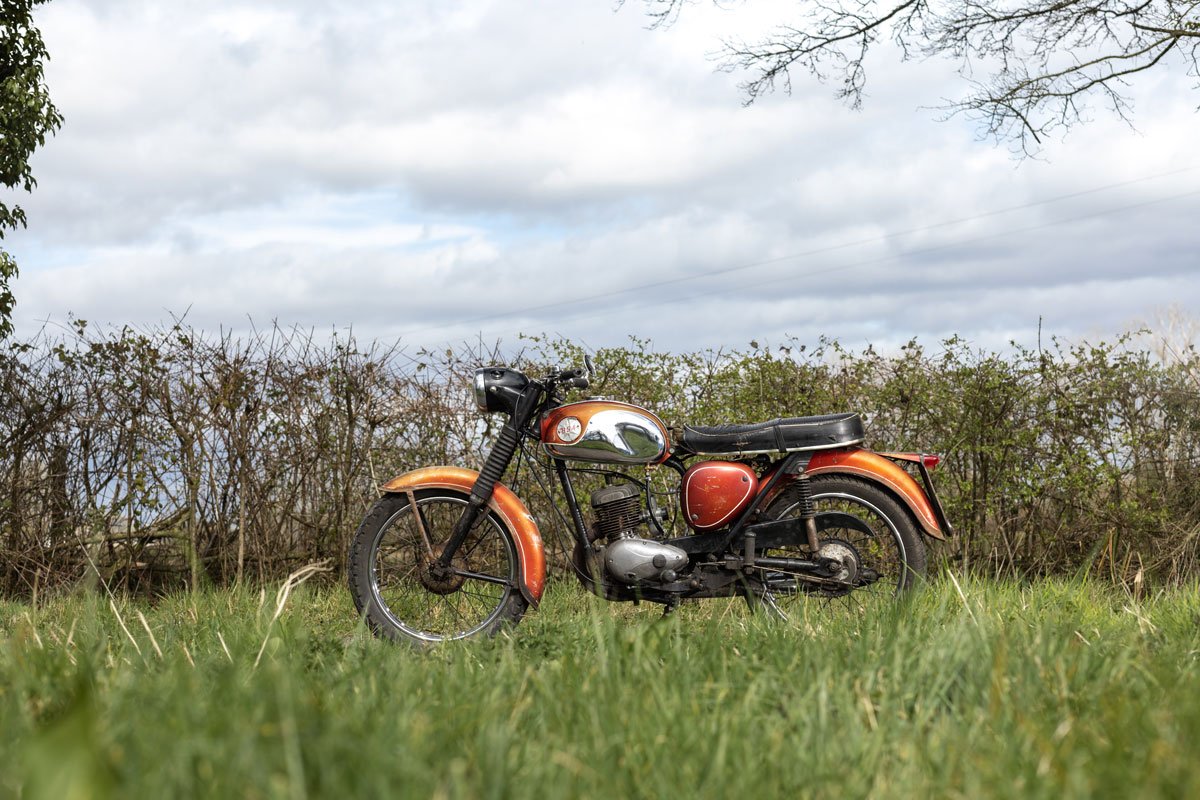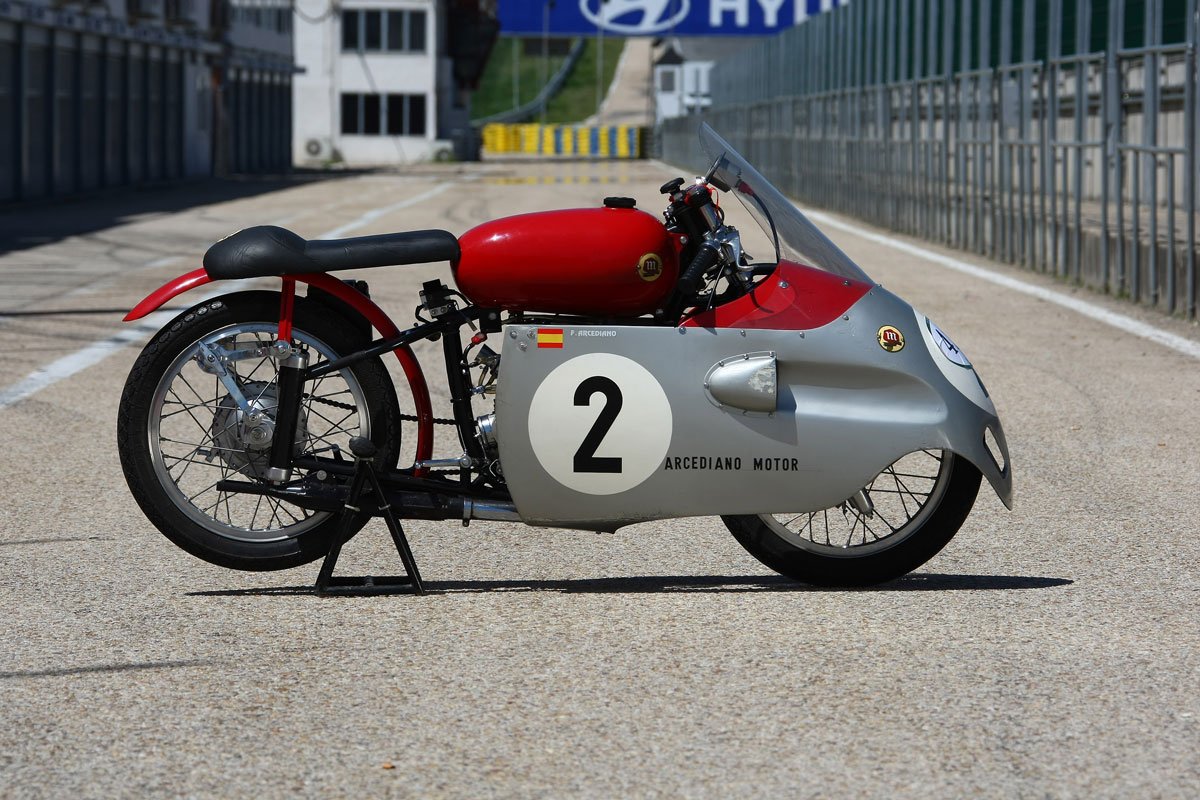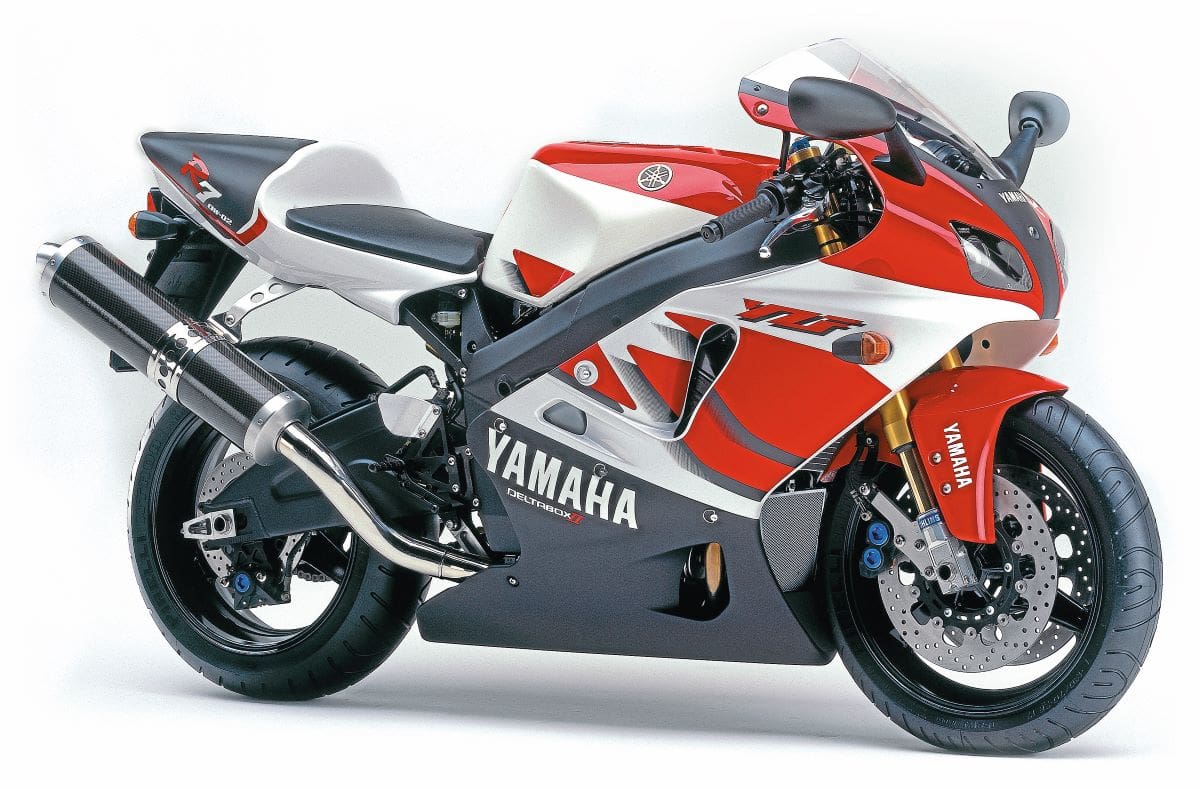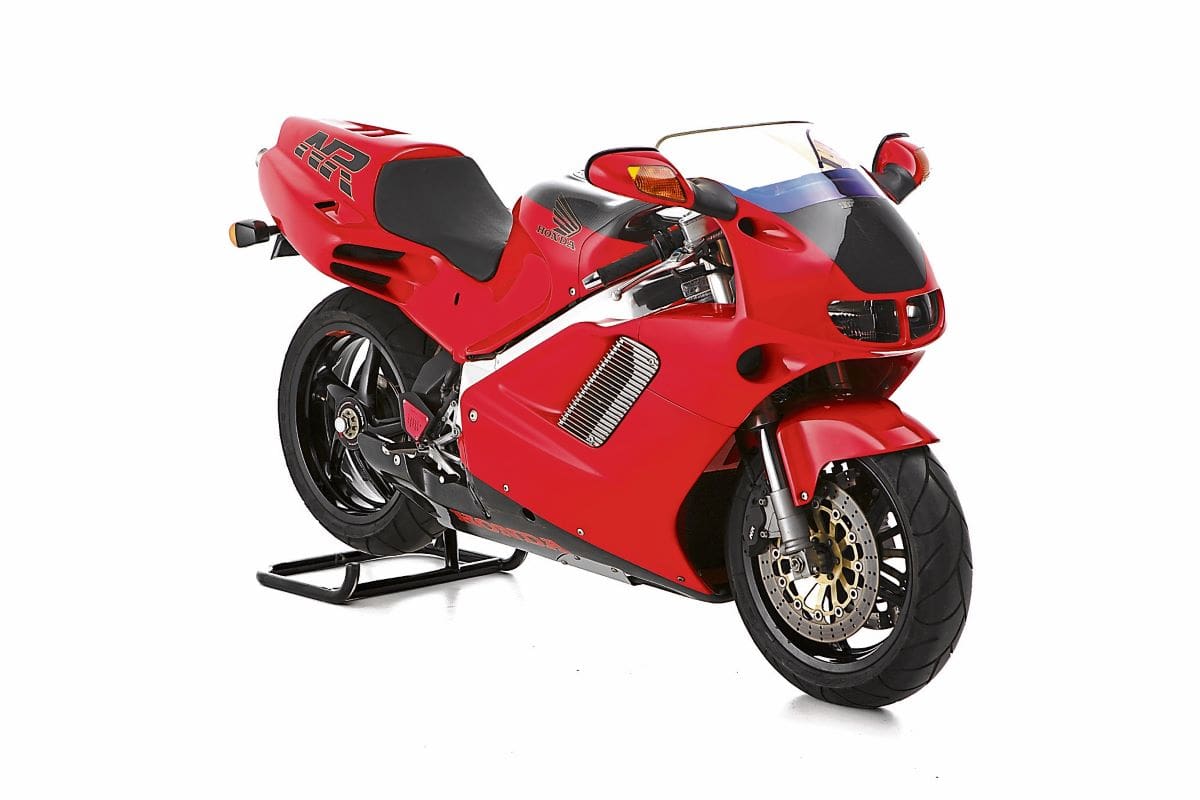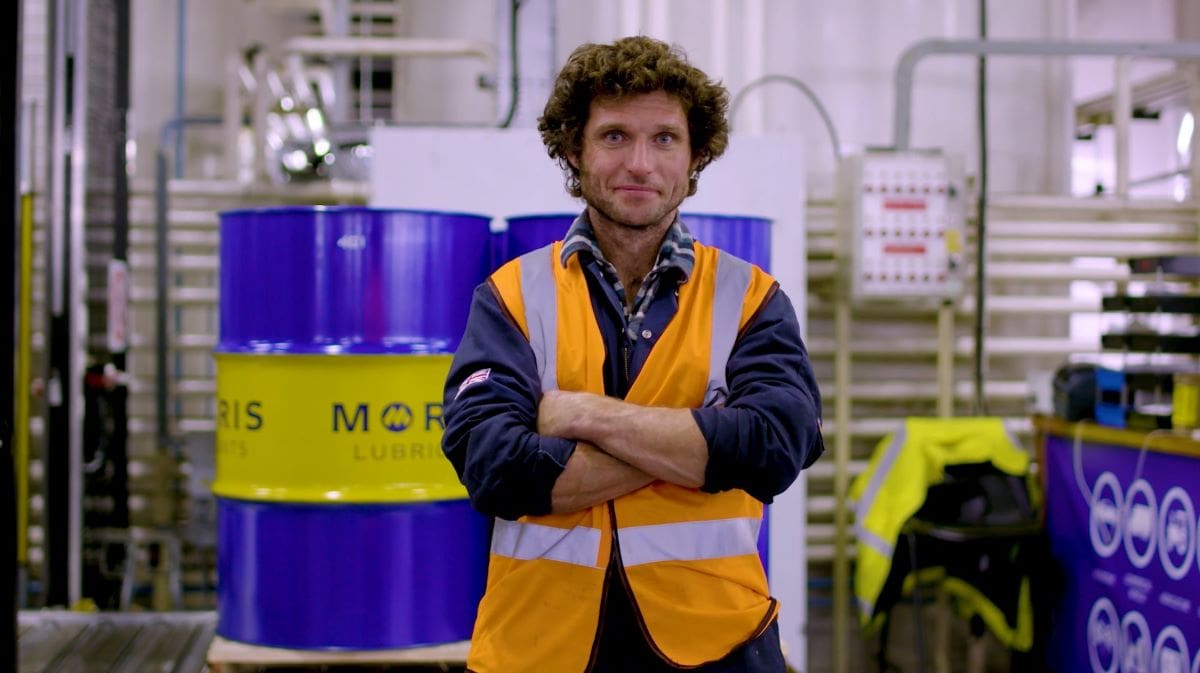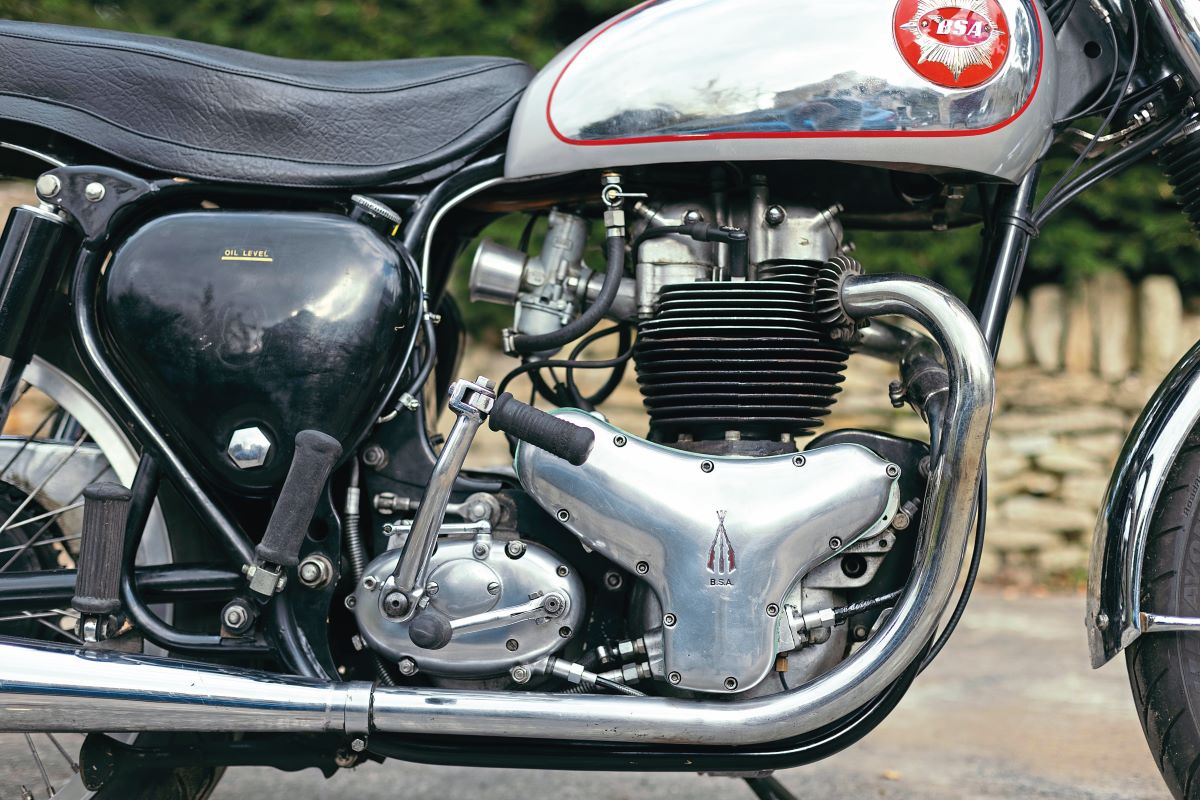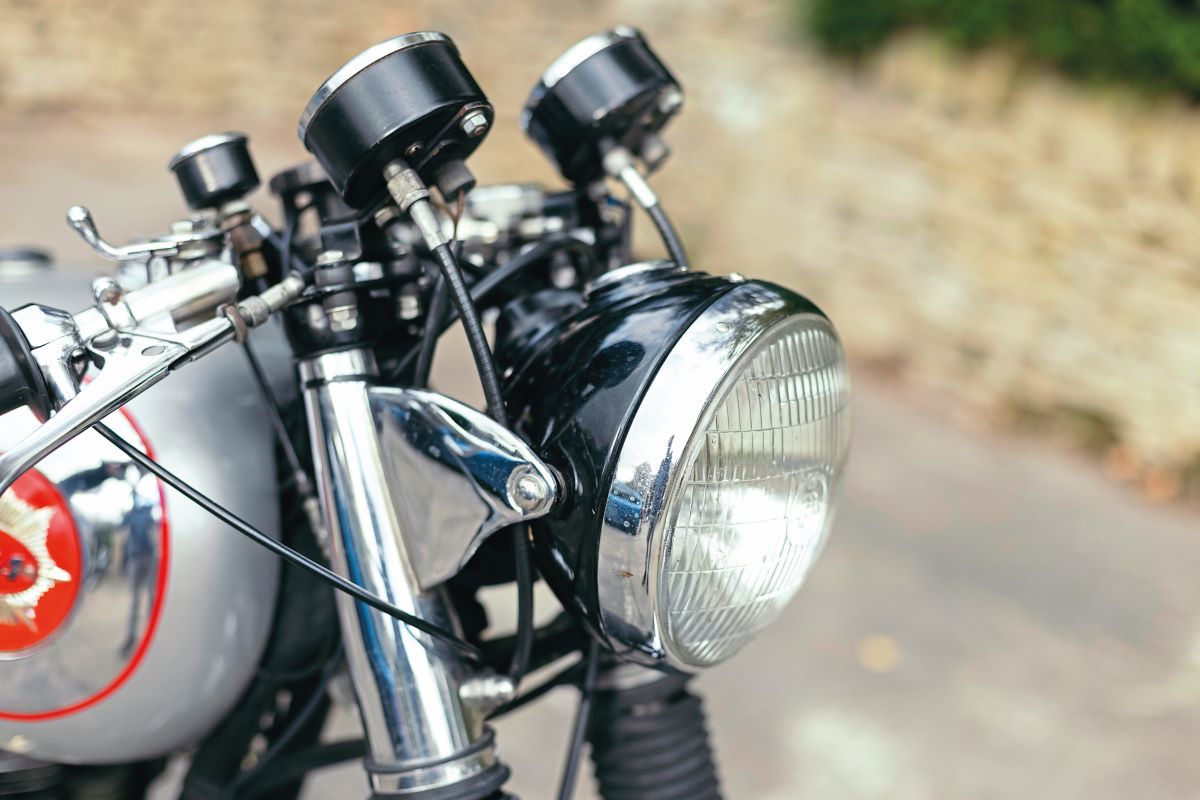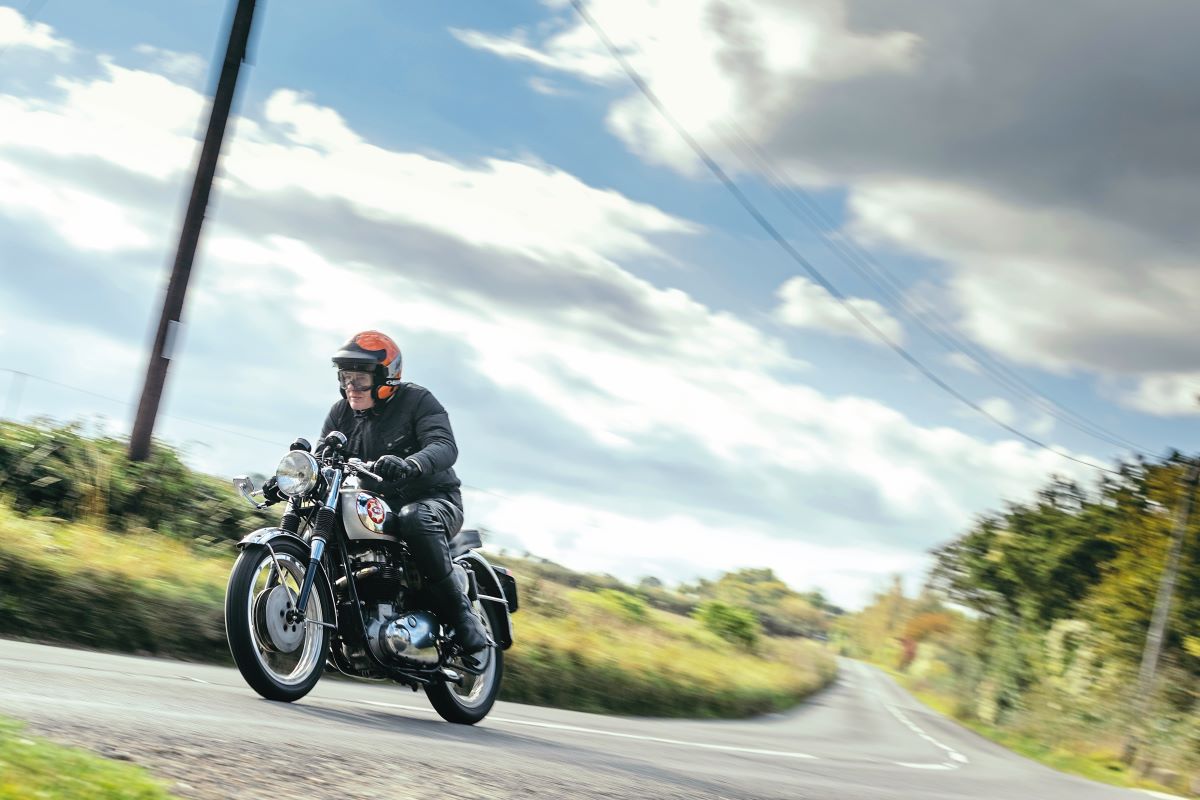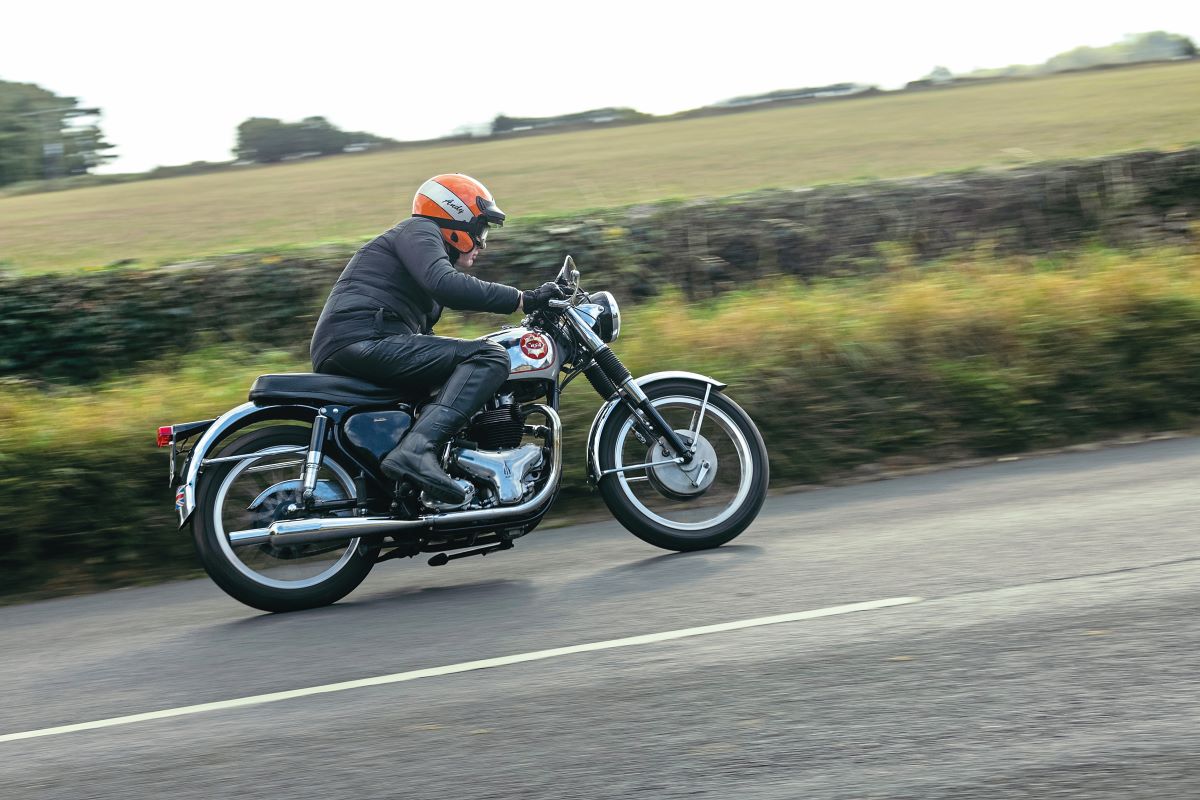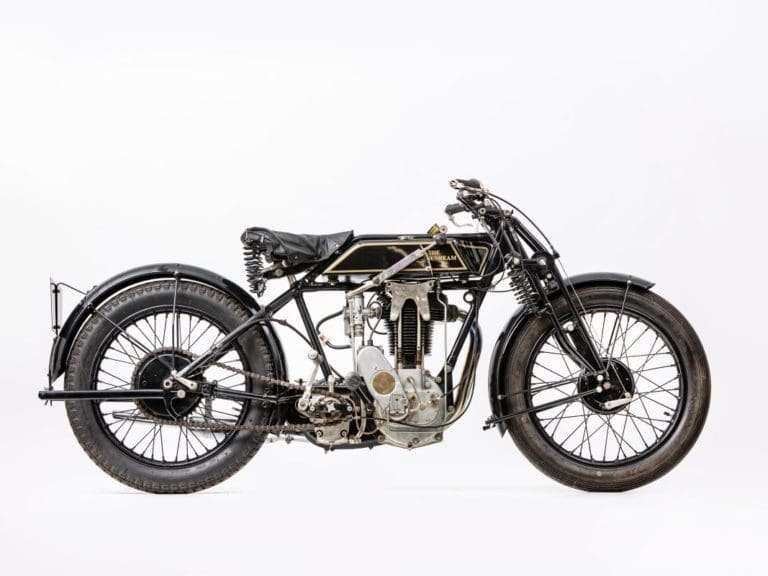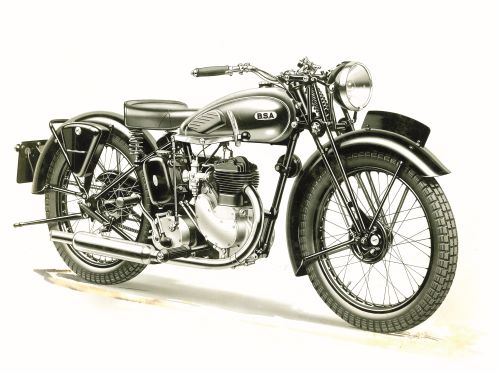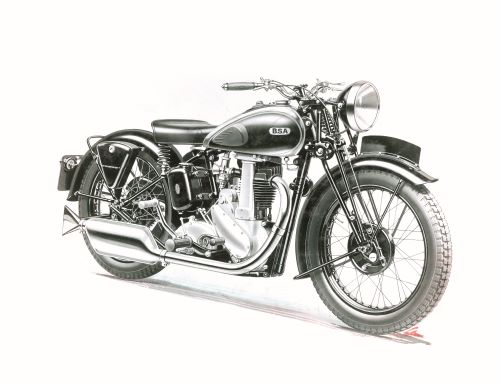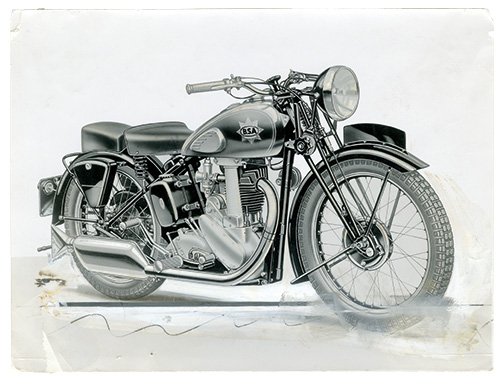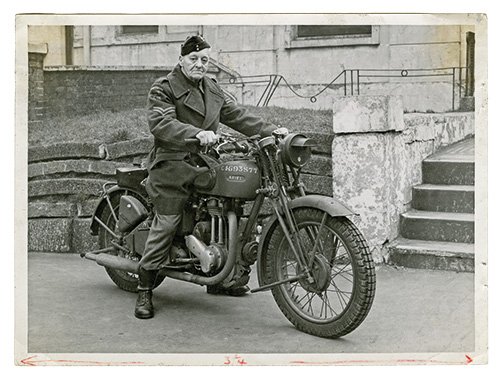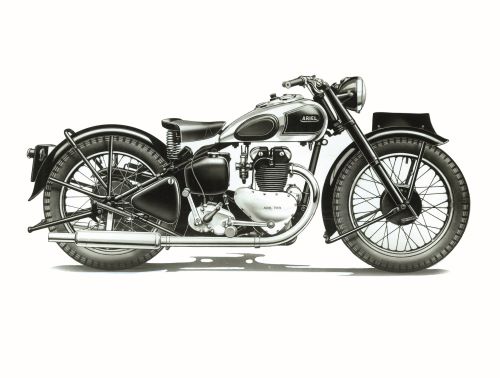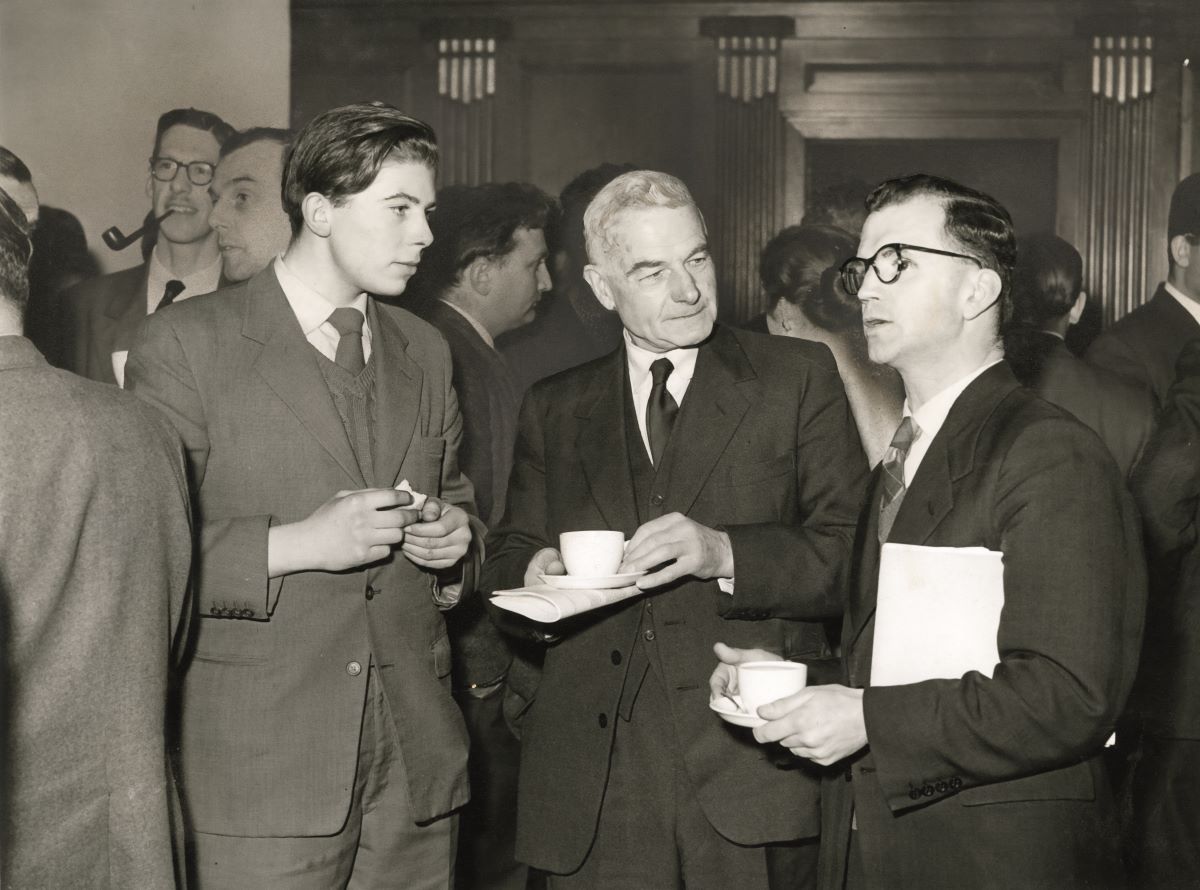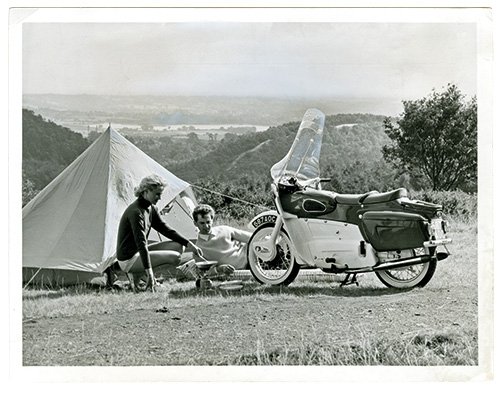Winds of Change
By 1936, BSA were in a trough. For once, their competition team of Bert Perrigo, Jack Amott, Harold Flook and Marjorie Cottle failed to win a major trial, and sales, although steady, weren’t picking up, as the UK struggled out of the world recession. Time for a different approach.
At the Leader’s unveiling, Val Page stands, head bowed, right of centre of the picture. Interestingly, Edward Turner stands alongside him.
Words: RICHARD ROSENTHAL Photographs: MORTONS ARCHIVE
Background
Appointed managing director of BSA Cycle Ltd in 1921, replacing Charles Hyde, Commander Godfrey Herbert DSO was promoted to the board of the BSA Group in 1936 – a move upstairs for the man who’d steered BSA Cycles Ltd through the worst economic crises ever. Again promoting internally, the group appointed BSA Cycles Ltd’s chief salesman Joe Bryan as Herbert’s replacement. Aside from his sales duties, Bryan was responsible for many BSA publicity stunts, including the world tours with V-twins.
As chief salesman, Joe knew the motorcycle range needed a revamp. True, BSA weren’t in the parlous situation of Ariel or Triumph when Valentine Page set to work, but their products were treading water rather than making the best of an improving world economic situation in the mid-1930s. Bryan knew staying still wasn’t enough if BSA motorcycles were to survive.
The 1937 side-valve B20, one of Page’s new introductions.
Another of the 1937 newcomers, the ohv Sports B21.
Drama
Through 1936, other than at BSA, few grasped Mr Page had moved from Coventry to Birmingham. All was revealed in September 1936 at the dealers’ convention on the ‘silver screen.’ Rumours at the convention implied Joe Bryan was to unveil a new range, but all knew he was in South Africa on BSA business. And one didn’t just jet back for a meeting in 1936.
As dealers swapped stories and enjoyed BSA’s hospitality at the convention, the lights went out and, using the then-modern talkie motion picture technology, Bryan appeared on the big screen to reveal BSA’s 14-model 1937 range. The drama stunned the assembly into silence, who watched and listened intently.
Just two models, the ohv 748cc Y13 and side-valve 986cc V-twins, were continued from last season, joined by 12 new single cylinder machines. As dealers watched, many recognised who was behind the programme, simplification of motorcycle identification and modernisation. Mr Valentine Page. A handful were unhappy, but most were delighted with the new models to attract new buyers and retain existing customers. Let the cash registers roll.
The 1937 M20 and M21; the M21 was revised for 1938, with
different-to-1937 bore and stroke.
Another of the 1937 models, this the 500cc ohv M22.
Some assumed Page had replaced Herbert Perkins (d.1957), a gifted engineer who’d been with the BSA group since 1920. However, Perkins was a group engineer who worked on many projects away from motorcycles, such as machine tool designs including the copy lathes BSA manufactured, production line development, economies of manufacture (also one of Page’s many skills) and BSA cars, including the Scout. Whether the two men got on is unknown, but Perkins did work alongside Page on motorcycle development, although Val was the group’s motorcycle designer.
Val Page’s rationalisation included dropping the 150cc motorcycles and ending three-wheeler production. As well as 12 new single cylinder machines, dealers learned the new model classifications. BSA’s past 250cc-only B code was now used for 250 and 350cc ‘lightweight’ machines, while the existent M code was applied to 350cc to 600cc singles. The V-twins remained as was.
Val Page’s launch model B and M series
Drawing from his experience at JAP, Ariel and Triumph, which combined with his design skills, correct drawing office practice and frame development work learned first at Ariel, Val Page had no hesitation in dropping long-standing BSA designs, including forged frame backbones and crankcase extension oil sumps. That visually his engine design bore resemblances to his work at Triumph with regards to magneto position, timing chain cover designs and valve gear, which in turn bore resemblances with his work at Ariel and even back to JAP, is no surprise.
Again, it wasn’t always a case of out with all the old, thus the 250cc (249cc) range kept the traditional BSA dimensions of 63x80mm (bore x stroke) and the 350s (with the exception of the M19) used the 71x88mm dimensions BSA had introduced for 1933 with the R series models. However, rather than bore out the 350cc engine to 85mm giving a 499cc engine for the ‘500cc’ range, familiar to owners of post Second World War B33 and B34 machines, Page opted for engine dimensions of 82x94mm (496cc).
The hot one of the 1937 range – the 500cc M23 Empire Star.
The new models had brazed-up frames with a top tube, instead of cast backbones. Though while frame design was common across the new single cylinder range, frames were built to suit models and only interchangeable with like models.
Val Page design features also common across the ranges included rear, behind the barrel, mounted Lucas Magdyno (magneto an option for competition models), revised valve gear identifiable on ohv models by the cast aluminium pushrod enclosing tower, and enclosure for springs and stems with cooling passage for the springs and valves. Again, common to all single cylinder models was dry sump lubrication, with worm driven double gear pump mounted in a protruding casting to right side crankcase half. Models with duplex cradle frame had a kink in the right side bottom rail to accommodate the crankcase-cast oil pump protrusion.
All models had single exhaust port cylinder heads, with twin port optional for some models. And all except the competition model had push-in front pipe to engine exhaust port, with securing straps to frame. The competition B25 (ohv 348cc) had its exhaust pipe secured by a finned nut.
* By the close of 1937, BSA had sold over 19,000 motorcycles. To put this into perspective, UK motorcycle registrations amounted to just over 56,000. Of course, some of the 19,000 Beezers were exported.
* Whether BSA’s fortune changed, or Page’s new models were responsible, or both… in early 1937, Bert Perrigo, riding his works B25 Competition model, won three major trials (Lister Trophy, Colmore Cup and Victory) in weeks. Later, Perrigo stepped back from most trials, except six-day events. Although entered on an Ariel outfit for the year’s SSDT, Harold Tozer turned out on a factory 496cc BSA outfit, securing a Silver Plaque and started his long and successful association with the factory.
Famous picture of Wal Handley posed with his tuned Empire Star at Brooklands, where he secured a Gold Star for himself and a model name for BSA.
The Gold Star legend
The naming of the BSA Gold Star is legend, so, briefly, TT winner, pilot, car racer and motorcycle shop proprietor Wal Handley pushed out his BSA Empire Star on June 30,1937, for the BMCRC mid-week handicap. As many know after their 1921 IoM TT debacle BSA weren’t a racing factory – okay!
Handley’s mount, based on an 80mph Empire Star (M22 or M23, take your pick – both have been quoted) was prepared for Brooklands by Val Page, David Munro and Herbert Perkins. Wal’s Weybridge Track pit crew were BSA factory trials rider Jack Amott and well respected former competition rider Len Crisp. Folklore implies BSA’s Bert Perrigo, also an amateur pilot, persuaded Handley at their West Bromwich Aero Club it would be a great wheeze for Wal to earn a Brooklands Gold Star (breaking the Outer Circuit 100mph lap barrier on a specific class of machine for their first time). Mr Handley would get his Gold Star and BSA lots of publicity. Of course, if it all went badly wrong, the factory would distance themselves from the affair.
Some – those devoid of a sense of fun! – claimed/claim the secretive effort was a successful attempt by Handley and BSA to deceive the Brooklands handicappers. Personally, I think nothing could be further from the truth; rather BSA wanted to secure a 500cc (Class C) Gold Star. Albeit a tiny item, but one which is truly worth far more than its weight in gold. One can only imagine what was going through the minds of fellow competitors, as Wal Handley, supported by Amott and Crisp, readied for the day’s race card-opening three-lap event on Brookland’s outer circuit. Surely, an untried racing motorcycle, developed from a touring single more suited to off-road competition, hadn’t a chance against their track-bred motorcycles?
Harold Tozer was one of BSA’s new recruits, here pictured heading for 1938’s ISDT.
In little more time than it takes buy a pint of beer, Wal Handley thundered round the banked outer circuit to win the race at 102.27mph, with a fastest lap of 107.57mph. Even though the press gave the foray scant coverage, BSA were cock-a-hoop and made their own publicity. Less than two months later, a new machine for 1938 was announced – the 496cc M24 Gold Star.
The fast roadster (also offered with high pipes and knobbly tyres to competition men) was developed from Handley’s Brooklands mount and the Empire Star which sired it. The M24 had aluminium alloy cylinder head and barrel (fitted with Austenitic liner) with integrally cast pushrod enclosure replacing the separate cast tower of their iron engines. Weight was pared down to 315lb. Press tests confirmed over 90mph and a racer was briefly offered with claims of over 100mph.
Midlands factory merry-go-round
Val Page continued at BSA through much of 1938, updating models, while some claim he was involved with others – including David Munro and Herbert Perkins – in developing a BSA parallel twin. Possible or not? Unofficial sightings around Birmingham suggest examples were tested in early 1939.
Val moved briefly back to Triumph towards the end of 1938 as chief engineer, with Edward Turner now the factory’s managing director. Just months later, in May 1939, Mr Page was at Selly Oak, replacing Vic Anstice as Ariel Motors’ chief designer. At the time, both Ariel and Triumph were under the control of the Sangster family, with Jack Sangster looking after the latter.
Ariel W/NG
Although Ariel announced their 1940 season range in early September 1939, almost all their stocks of single cylinder machines were taken by the Government’s War Office, albeit a few escaped into private hands.
Pictured in 1944, an Ariel W/NG with its Home Guard rider.
Through his career, Val Page spent many long days and late nights designing and developing motorcycles against tight deadlines, but the Second World War must have been his most pressing task. Luckily, for once he had a good starting point – Fred Povey’s 346cc single cylinder works competition model ridden in the 1938 Scottish Six Days Trial, an event won by Len Heath, also Ariel. Page thoughtfully considered what military riders needed… A good-handling, rugged motorcycle offering a decent top speed and acceleration, which is also reliable and simple to maintain.
The 346cc single (72x85mm) with 6.5:1 compression ratio was devoid of unnecessary equipment including tank top instrument panel and simplified bearings where appropriate, including to gearbox selector shaft, while military additions included a long prop stand hinging out from under the saddle. A single prototype was supplied to the War Office on July 18, 1940, and production began three weeks later. The W/NG underwent updates during the Second world War but retained its girder front fork throughout its production run, arguably what worked well in peace time off-road competition would also serve the military with aplomb.
Sources state Selly Oak supplied the UK and Allied forces 47,599 W/NGs – dispatch riders were delighted when allocated one and today survivors remain highly sought.
The November 1947 launch picture of the 500cc Ariel twin.
Ariel 200cc Colt, which owed much to BSA. This picture dates to 1956.
Two cylinders
War over, Page was officially working on a four-stroke parallel twin in his Selly Oak drawing office. As with rivals, it is likely he’d started work before hostilities ended, as Triumph’s twin had pulled the rug from under rivals. Prototype 499cc ohv twins were under test by autumn 1946 and two models were announced in November 1947 – the KG De Luxe Fieldmaster and KH Red Hunter.
They shared the 63x80mm engines, but tuned differently – the KH Red Hunter had 7.5:1 compression ratio and polished cylinder head with carburettor to suit, while the KG Fieldmaster had a 6.8:1 compression ratio and no cylinder head polishing. Developing 26bhp at 6500rpm, the KH was tested solo at up to 85mph, while the 24bhp at 6000rpm KG was a little slower solo but still achieved 65mph with single seat sidecar.
Although these 500cc Ariel twins never achieved the sale success of Triumph and BSA twins, they are well thought of and Ariel rightly claimed in period they were the only maker worldwide to manufacture one, two and four-cylinder motorcycles. There were developments of the twin cylinder range, including the 28bhp at 6200rpm 499cc KHA for the 1953 season, and finally the 647cc ohv twin cylinder, BSA ‘inspired’ FH Huntmaster for 1954.
At an Institute of Mechanical Engineers talk on two-strokes, Val Page, centre, is flanked by Peter Humber, of The Motor Cycle, left, and Vic Willoughby.
Colt
What motivated Ariel to enter the lightweight market with a 200cc machine is unclear – some reckon they were influenced by Triumph’s Tiger Cub, but considering launch dates, this seems unlikely, though they may have been aware of developments at Meriden. Designed under Page’s tenure, and doubtless with his input, the Colt seems, in hindsight, an odd machine, a mix of then-modern and dated thinking. For example, its plunger rear suspension frame was like that of a BSA Bantam, yet, unlike many lightweights, it boasted accomplished hydraulically damped front fork.
Coded the LH, its 198cc (60x70mm) ohv engine, with 7.5:1 compression ratio giving 10bhp at 5600rpm, drove through a Burman GB30 four-speed gearbox. Weighing 270lb, the Colt had 19inch wheels, five-and-a-half inch front and five-inch rear brakes and testers reported just over 60mph top speed, a little less with pillion passenger.
Leader
Val Page hadn’t been involved with two-stroke engine design since his time at JAP,which ended in 1925, and, anyway, these were predominately economy units. His 1950s brief from the board was for a modern, under 250cc two-stroke twin cylinder machine, as their research implied such a machine with an engine built as one with the gearbox was the ideal power unit for a sophisticated, quarter litre class motorcycle, which would have the advantage of low tax rates. An ideal mount for learners and the experienced rider, they claimed.
Two schools of thought exist as to whether Mr Page took a long, hard look at the then-best 250cc class two-stroke twin cylinder motorcycle on the market, the German built Adler, or didn’t. I’ve always favoured the first option, and, if so, Val was in good company, as it is clear both Yamaha and Suzuki took more than a passing interest in the Adler MB250 before committing. And for those who don’t like this theory, it is worth remembering the first ‘high speed’ modern engine was designed by George Bouton and unveiled as the De Dion Bouton in 1895, and, in principle, every ‘high speed’ internal combustion engine is its descendent.
The Leader’s engine was a 247cc (54x54mm) twin cylinder loop scavenge two-stroke unit with 8.25:1 compression ratio, developing 16bhp at 6400rpm. It was fitted with an Amal 375/33 Monobloc Carburettor, Lucas 50W alternator and Burman CP-like gear cluster (slightly narrower pinions) in a housing which was part of the engine castings. A pair of metal pressings welded together formed the spine frame to support the underslung engine. Further pressings formed the bodywork and trailing link type front fork structure.
Weighing 330lbs dry (with accessories) the Leader had 16-inch wheels, with six-inch sls drum brakes front and back. Running on petroil, press testers hit almost 70mph sitting upright behind the Leader’s full screen and leg shields. Fuel economy was quoted as 80mpg at 50mph, with a suggested comfortable cruising speed of 50-60mph. On December 18, 1958, Motor Cycling’s tester penned: “Modern motorcycle performance and handling combined with rider protection. Full enclosure and modern styling.” Valentine Page had hit the design brief for the last time in his long career.
One hopes his bosses fully appreciated their quiet, cultured, gifted design engineer. Or, as Roger Barlow, one of Page’s younger staff members at Selly Oak during the late 1950s, oft remarked of his old boss, “One of life’s gentlemen.”
The Ariel Leader, envisaged as a sophisticated and modern touring motorcycle.



